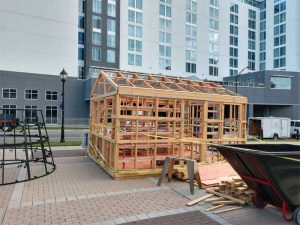
The U.S. is experiencing a “wood revival” contributing to the complexity of fire-retardant-treated wood (FRTW) specifications. This demand for wood products continues to grow as designers appreciate its renewability, versatility, aesthetics, and most important, its ability to sequester carbon once installed. Writing a strong, generic specification for FRTW helps ensure code-compliant FRTW will be installed, competition will be encouraged, and ultimately performance and value for the owner will be delivered.
The building and fire codes require FRTW to be impregnated with chemicals. Impregnation refers to a technique for treating absorbent materials with chemicals. Impregnating wood materials with fire retardants changes the chemical, physical, and mechanical properties of the wood, resulting in a complex new material. Impregnation of wood with fire-retardant chemicals reduces the combustible properties of wood by greatly reducing the amount of volatiles released during the initial stages of combustion. In addition to decreasing the rate of flame spread, FRTW is self-extinguishing and ignition-resistant. In other words, for FRTW to burn, it must be exposed to a persistently applied, external fuel source, without which FRTW cannot ignite and sustain combustion.
Writing a strong, generic specification for FRTW is daunting. Chapter 23 of the 2018 International Building Code and NFPA 703, Standard for Fire-Retardant-Treated Wood and Fire-Retardant Coatings for Building Materials contain detailed lists of requirements for FRTW that may not be clearly or easily understood by those who are unfamiliar with FRTW. Add to these lists the number and types of non-code-conforming products that are mistaken for FRTW, like paints, coatings, stains, and other types of vulnerable surface treatments, and specifiers may find themselves quickly overwhelmed.
This article contains a strong, generic model specification in standard CSI format for FRTW that will help specifiers:
• Identify the critical code requirements for FRTW; and
• Use those requirements to write their own strong generic specification for FRTW.
The following sections correspond to those used in the model FRTW specification.
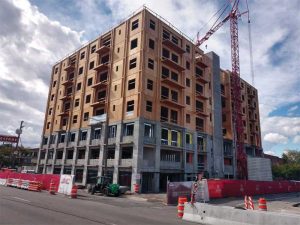
Part 1: General
1.01 Summary
Two types of code-compliant, pressure-impregnated FRTW are manufactured: interior and exterior. The specification summary section should include both, as interior and exterior FRTW can be used in many applications where noncombustible materials are required by building and fire codes. Interior FRTW is used in weather-protected applications (i.e. where the FRTW is not permanently exposed to the elements). Exterior FRTW is used in weather-exposed applications (i.e. when the FRTW is permanently exposed to the elements).
Many applications for interior and exterior FRTW exist in the codes (see Table 1, page 24), and these occur in the following:
• Section 06 10 00 Rough Carpentry;
• Section 06 20 00 Finish Carpentry; and
• Section 06 40 00 Architectural Woodwork.
1.02 References
Four main standards are used for FRTW product evaluation. They should be included in the specification’s references section:
• UL 723 (ASTM E84);
• ASTM D3201;
• ASTM D2898; and
• Military Specification MIL-L-19140E.
A more detailed explanation of these standards appears later in this article.
1.03 Performance requirements
The building and fire codes contain prescriptive requirements for FRTW. These include both fire and non-fire performance characteristics. Fire performance is evaluated using UL 723, Standard for Test for Surface Burning Characteristics of Building Materials. The test consists of a 7.6-m (25-ft) long rectangular tunnel with two gas burners at one end that direct a 1.4-m (4.5-ft) flame under controlled conditions of draft and temperature onto the surface of a 7.4-m (24-ft) long by 508-mm (20-in.) wide specimen.
Table 1: Code References for Selected FRTW Applications
| FRTW Application | IBC 2018 Ed. | NFPA 5000 2018 Ed. | NFPA 101 2018 Ed. |
| Architectural Trim, Exterior Wall Coverings | 1405.1.1#3 | 37.2.1 | |
| Exterior Bearing Walls in Type III Construction | 602.3 | 7.2.4.2.1 | 4.4.2.1* |
| Interior Finish with Flame Spread Index < 25 | 803.11 | 10.2.3.3(1) | 10.2.3.3(1) |
| Kiosks in Covered and Open Mall Buildings | 402.6.2#1.1 | 27.4.4.13.1(1) | 36.4.4.11(1)(a) |
| Partitions (2 hr or less) in Types I & II Construction | 603.1#1.1 | 7.2.3.2.11.2 | 4.3.2.11.2* |
| Roof Construction in Types I & II Construction | 603.1#1.3 | 7.2.3.2.9.2 | 4.3.2.9.2* |
*NFPA 101 references NFPA 220: Standard on Types of Building Construction.
Flame spreads along the surface of the material as the test progresses. To provide standard conditions for each test, the tunnel is calibrated to an index of zero for 6.4-mm (0.25-in.) cement board and 100 for untreated red oak flooring.
UL 723 (ASTM E84) is a 10-minute test. The codes require FRTW to be tested for an additional 20-minute period, meaning the FRTW is challenged by fire for a total of 30 minutes:
• During the first 10 minutes of the extended test, the distance of flame travel and rate at which the flame front advances are used to calculate the flame spread index (FSI). Per the codes, the maximum allowable FSI for FRTW is 25;
• FRTW must show no evidence of significant progressive combustion when the test is continued for an additional 20-minute period; and
• The flame front shall not progress more than 3.2 m (10.5 ft) beyond the centerline of the burners at any time during the 30-minute test.
The codes require that FRTW is dried to a maximum moisture content (MC) of 19 percent or less for FRT lumber and 15 percent or less for FRT plywood. By specifying the FRTW is kiln-dried after treatment (KDAT), the drying occurs under carefully controlled conditions, minimizing drying-related defects in FRTW products.
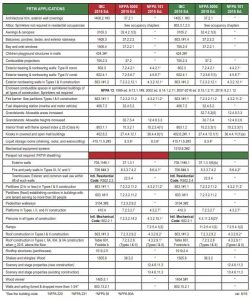 The codes also require that non-fire performance characteristics be evaluated using additional standards. Interior FRTW must have an MC of less than 28 percent when tested in accordance with ASTM D3201 at 92 percent relative humidity (RH). Exterior FRTW must demonstrate no increase in the listed classification when subjected to the “Standard Rain Test” or ASTM D2898. In other words, after simulated exposure to rain, exterior FRTW must maintain a FSI of 25 or less during the 30-minute test.
The codes also require that non-fire performance characteristics be evaluated using additional standards. Interior FRTW must have an MC of less than 28 percent when tested in accordance with ASTM D3201 at 92 percent relative humidity (RH). Exterior FRTW must demonstrate no increase in the listed classification when subjected to the “Standard Rain Test” or ASTM D2898. In other words, after simulated exposure to rain, exterior FRTW must maintain a FSI of 25 or less during the 30-minute test.
1.04 Submittals
While the codes’ performance specifications are generic, the chemical compositions of various manufacturers’ formulations are proprietary, so it is important to obtain each manufacturer’s recommendations specific not only to storage, handling, and installation but also to finishing. These proprietary formulations will also result in different safety concerns based on the chemicals used, so their respective Safety Data Sheets (SDS) should also be required in the submittals.
The quality assurance and closeout/warranty submittals are evidence the specified pressure-impregnated FRTW meets the quality assurance requirements and warranty provisions in the following sections.
1.05 Quality assurance
Competitive bidding of public projects is mandated by statutory requirements. This is sound public policy, and many large, private clients also require competitive bidding as part of their procurement policy.
The requirements for FRTW in military specification MIL-L-19140E mirror those in the codes. Specifying wood treatment qualified under MIL-L-19140E and listed by the U.S. Department of Defense (DoD) on its Qualified Products List (QPL) provides a list that has been prepared for use by or for the government in the acquisition of products covered by the subject specification and provides a source of vetted, qualified (“or equal”) products.
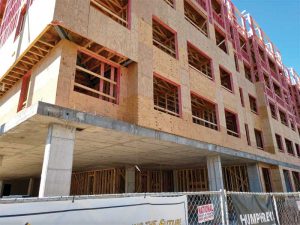
Specifying treatment plants with ongoing UL Classification and Follow-up Service verifies the material’s quality and provenance of production through countercheck and on-site surveillance. Note the UL listing for FRTW only applies to products marked “UL Classified.”
1.06 Warranty
Warranties for FRTW are manufacturer-specific and must be submitted by the authorized company official indicating the FRTW is manufactured under independent third-party follow-up inspection and that it meets or exceeds the code requirements for FRTW.
Part 2: Products
2.01 Fire-Retardant-Treated Wood
All codes require FRTW products to be listed, which means:
• It has been tested for conformance to the code-required standards;
• Its test results are published in a maintained list; and
• It is subject to third-party inspection and quality assurance.
By specifying FRTW manufacturers who are listed in the UL Online Certification Directory for Treated Lumber (BPVV) and Treated Plywood (BUGV), specifiers are ensured only those species of lumber and plywood eligible for listing in the UL Building Materials Directory will be provided.
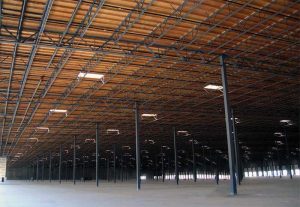
By specifying the FRTW treatment is listed in the DoD’s QPL under MIL-L-19140E, specifiers ensure only pressure-impregnated FRTW will be provided. This reinforces code provisions that clarify paints, stains, coatings, and other surface-applied treatments are not FRTW and only chemically impregnated FRTW is approved for use in lieu of non-combustible materials.
Finally, by specifying the product is labeled with the UL Classified Mark, specifiers are ensured FRTW products demonstrating conformance to the labeling requirements (see sidebar) in the codes will be provided. This is extremely important because only those labels including the UL Classified Mark signify active plant participation in the UL Classification and Follow-up Service.
2.02 Product substitutions
Substitutions will happen no matter how comprehensive the specification. The lack of information, leading to incomplete or inappropriate specifications, is the underlying reason for substitutions. The courts have clearly stated the specifier is the final arbiter of what is a “or equal” product, not the manufacturer, the product rep, the contractor, or the owner.
Given this, how does a specifier understand the range of appropriate products, determine the acceptable common denominator, and proceed to ensure every qualified product is identified and named? This is almost always impossible but by requiring product substitution requests be considered in accordance with the provisions of Section 01 25 00–Substitution Procedures, the specifier can maintain a semblance of order in the process.
2.03 Related materials
This model specification covers the treatment, handling, and fabrication of FRTW. Lumber and plywood grades must be specified separately from treatment. For related wood materials required to be treated, the appropriate related Division 6 sections should be referenced.
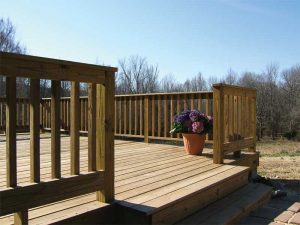
Part 3: Execution
3.01 Manufacturer’s instructions
Generic FRTW product literature, technical bulletins, and installation instructions do not exist. It is important to obtain and comply with each FRTW manufacturer’s instructions.
3.02 Examination
Each piece of FRTW should be inspected prior to use. Pieces exhibiting characteristics that could impair quality or workmanship such as traditional drying-related defects (excessive bowing, cupping, twisting, checking, or warping) should be discarded. FRTW that is wet or has been wet will need to be dried to the code-required MC before being installed.
3.03 Installation
Because lumber and plywood grades are specified separately from treatment, it is important to install FRTW in accordance with both code requirements and related Division 6 sections.
Interior FRTW ought to be installed in interior applications (including roof, wall, and floor sheathing) and should not be used where it will be exposed to in-service weather, wetting, or dampness. Exterior FRTW should be used in these latter locations and for other applications where specifically identified.
To maintain the UL listing for FRT lumber, milling or ripping parallel-to-grain should be done prior to treatment, as these actions post-treatment could alter the FRTW’s surface-burning characteristics. Field cutting across the grain (cut-to-length) is permitted after treatment without field treatment of cut ends. FRT plywood may be cut or ripped in any direction. Drilling holes is allowed in both FRT lumber and FRT plywood.
Individual treatments can impact fastener performance. Manufacturer-recommended fasteners should be used.
3.04 Construction
As with untreated wood, exposure to rain, dampness and humidity can result in elevated moisture content. Interior FRTW must be kept dry prior to installation by such means as covering bundles with weather-resistant materials, storing under shelter, elevating bundles to prevent ground contact, and allowing for air circulation around the wood.
FRTW roof and wall framing assemblies may become wet (e.g. rain) during construction. This section requires wet FRTW in the assemblies to be dried to the code-required MC before being enclosed and is consistent with those recommendations for untreated plywood from APA–The Engineered Wood Association.
3.05 Finishing
FRTW treatments may affect finish performance differently. Therefore, a specifier must obtain finishing recommendations from the manufacturer for the specific FRTW treatment provided.
A strong, generic specification for FRTW
The amount of information contained in this model specification is substantial—and deliberately so—to ensure code-compliant, listed, and labeled FRTW is provided and will perform as expected. While a select few code-compliant interior and exterior FRTW applications were identified in Table 1, the full list of code-compliant FRTW applications is much longer. With so many possible applications, and with so many products that are mistaken for FRTW, a strong, generic specification for FRTW must be as thorough and comprehensive as possible, too, and for good reason. Specifiers are the final arbiters of “or equal” products, so if the specifier is not dotting the “i’s” and crossing the “t’s,” then who is?



 Dr. Eckhoff is a codes and education specialist with Hoover Treated Wood Products Inc., who has more than 15 years of experience in the forest products industry. He provides FRTW technical expertise to architects, code officials, engineers, and specifiers.
Dr. Eckhoff is a codes and education specialist with Hoover Treated Wood Products Inc., who has more than 15 years of experience in the forest products industry. He provides FRTW technical expertise to architects, code officials, engineers, and specifiers.
